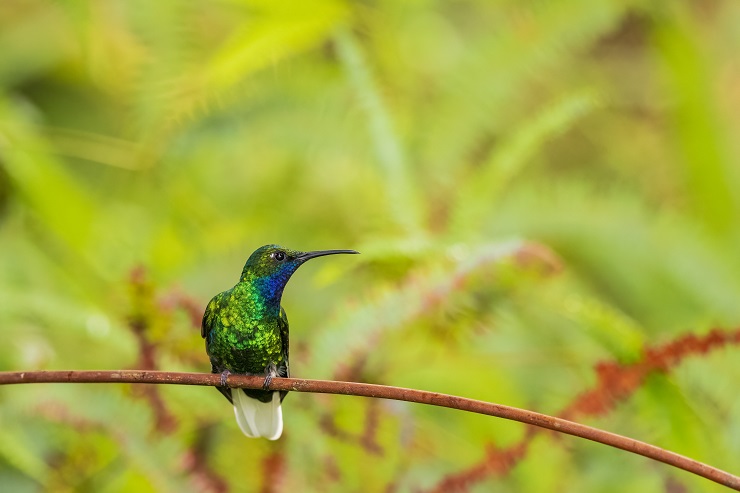
The island of Tobago isn’t the smallest in absolute terms, but it’s pretty tiny at approximately 25 miles long and just under 7 miles wide at its widest point. For Global Big Day on May 14th, we decided we’d try our hand at birding as much of the island as possible.
Naturally, we headed into the rainforest at the crack of dawn. The temptation to begin in the wetlands in the southwest of the island was great, but the rainforest in the early morning has a magnetism I simply cannot resist.
From the roadway, the first eBird list began with birds we could only hear – Barred Antshrike, Crested Oropendola, and even a Grey-throated Leaftosser – as our eyes and other senses became gradually attuned to the environment we were able to pick up movements in the undergrowth that turned out to be a couple Yellow-legged Thrushes. Higher in the branches at least one Red-legged Honeycreeper flew in and then out at pace.

One of the first birds we actually got a proper visual on was a true rainforest specialty, impossible elsewhere: this gorgeous adult male White-tailed Sabrewing!
It was an undeniably dank morning at the top of this island watershed, and even though we were able to discern some other species like Rufous-tailed Jacamar and the endemic Trinidad Motmot, activity was a bit slow. We were able to nail both Great Black Hawk and Broad-winged Hawk before touching any of the trails though, the added visibility afforded by the roadway paying dividends.
After some time we packed up and headed into one of the trails. More Red-legged Honeycreepers were overhead, this time accompanied by the first Bananaquits of the day. From hidden perches, Blue-backed Manakins vocalized. We were hoping for some of the more secretive species, however. I managed to spot a lone Stripe-breasted Spinetail moving around among fallen leaves – but the forest suddenly darkened and before we realized what was going on, the pattering of raindrops turned into a full on deluge.
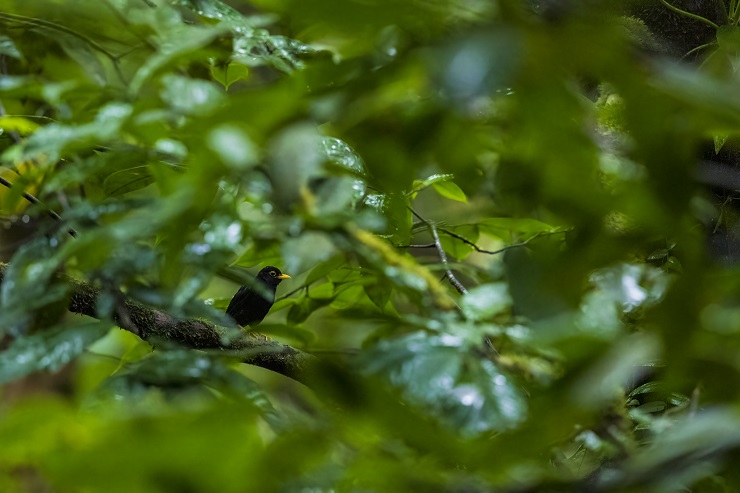
This Yellow-legged Thrush didn’t seem to mind the rain, belting out note after note as the cold, wet fingers of run-off began to creep down our necks.
We made the executive decision to abandon that trail and try another – one which proved incredibly fruitful. At the start of this new trail we accidentally flushed a White-tailed Nightjar that was sitting on a lone pink egg. After apologizing profusely to the annoyed bird, us bumbling humanoids hurried on into the forest.
Around a bend on the trail, we came upon a clearing. There was a small bird sitting motionless on a low stump, and I struggled to get a decent view. I wasn’t immediately sure of its identity, but then it gave a soft call and hopped a little further up the stump and now into a less obscured location. Amazed, excited, and stumbling over myself to focus my camera, I mumbled barely intelligible words as I tried to photograph this rarely seen species. Red-rumped Woodpeckers are the least encountered of the three woodpecker species found on Tobago, and this was only the second time I was able to photograph them properly.
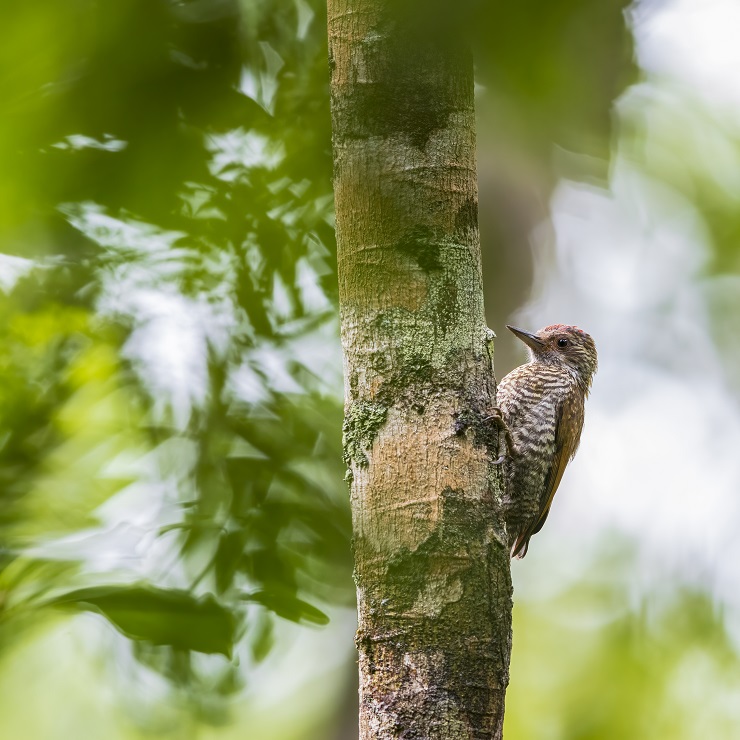
The Red-rumped Woodpecker is a strange one: on Tobago it is a forest resident while on Trinidad you are far more likely to encounter it in mangrove habitat. As such, it is easy to the discerning viewer to determine which island the bird was photographed on.
Time however, in its unrelenting march forward was pushing us out of the forest. There were several other stops we needed to make before the day’s end so we needed to get a move on. Heading out of the rainforest we opted to stop off at one of the beaches to see what seabirds were on offer. Seeing fishermen just about to pull in a net, I heaved a sigh at the notion of counting hundreds of Laughing Gulls and Magnificent Frigatebirds. Within the frenzy of activity there were a few Royal Terns as well as the smaller Roseate Tern.
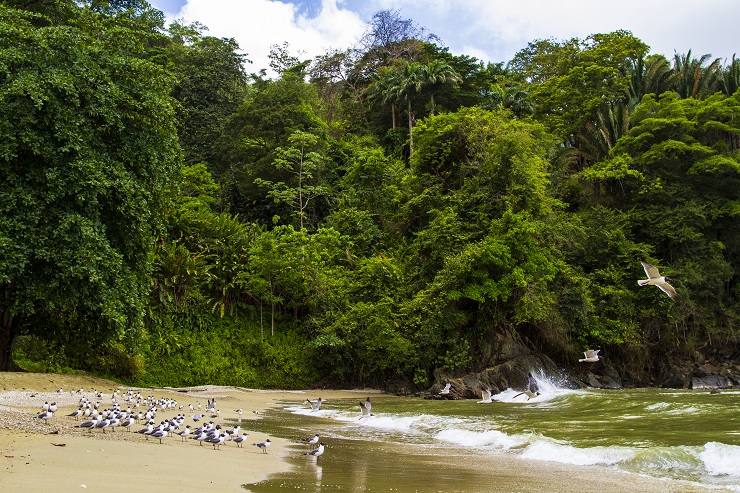
Part of the flock of Laughing Gulls, all in fresh breeding plumage.
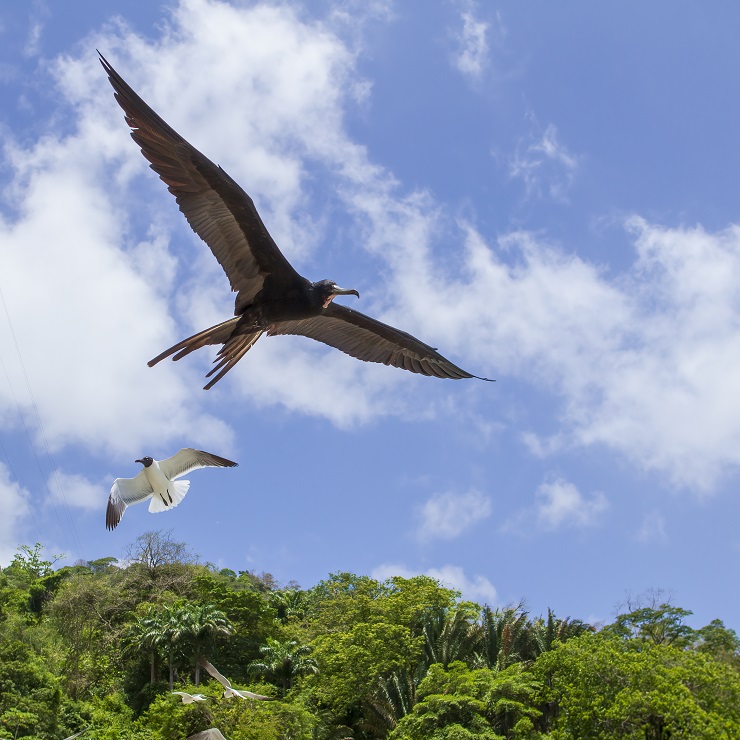
A Magnificent Frigatebird soars over the bay.
Admittedly, we spent much more time at this beach than we had initially planned, as we say in T&T I got “held up in a talk” at least twice. It was pedal to the metal on the winding mountain roads to our next destination: a broken-down jetty further west. Having gotten most of the coastal birds already, this was forecasted to be a quick stop for a single species in particular: Sandwich Tern. Success, further to this was a lone Brown Booby coursing low over the water.
The next stop was lunch for ourselves and then a couple wetland spots nearby. I left my wife in the car to handle her lunch as I ran out to do a quick list at the most prolific sewage ponds on the island. New species here included White-cheeked Pintail, Great Egret, Least Grebe, Black-crowned Night-Heron, Smooth-billed Ani, and many others. At the far end of one of the ponds I spotted a strange looking bird. Excitedly advancing, it turned out to be an immature Black-crowned Night-Heron. Needless to say by this time I was already baked by the sun at its unhindered zenith, so I retreated to the vehicle to continue our odyssey.
Another set of sewage ponds nearby gave us an additional duck – Black-bellied Whistling Duck. While we were hopeful for an appearance by any of the large Ardea herons that had been seen there in the recent past, we were not fortunate at that point in time. A few days prior, we saw a lone Cocoi Heron stalking the reeds, but no sign of that handsome heron this time.
The final stop in the lowlands of the southwest was in a place strangely called Lowlands. I didn’t anticipate on seeing anything different here, pausing here was intended to be my final opportunity to eat lunch before a 90 minute drive to the other end of the island. I must admit that I nearly tossed my food when I saw a bird fly across one of the ponds that was definitely a gull – but also definitely not a Laughing Gull. Grabbing the binoculars, I found myself looking at an all-white gull with a distinctly red bill and a large dark postocular spot.
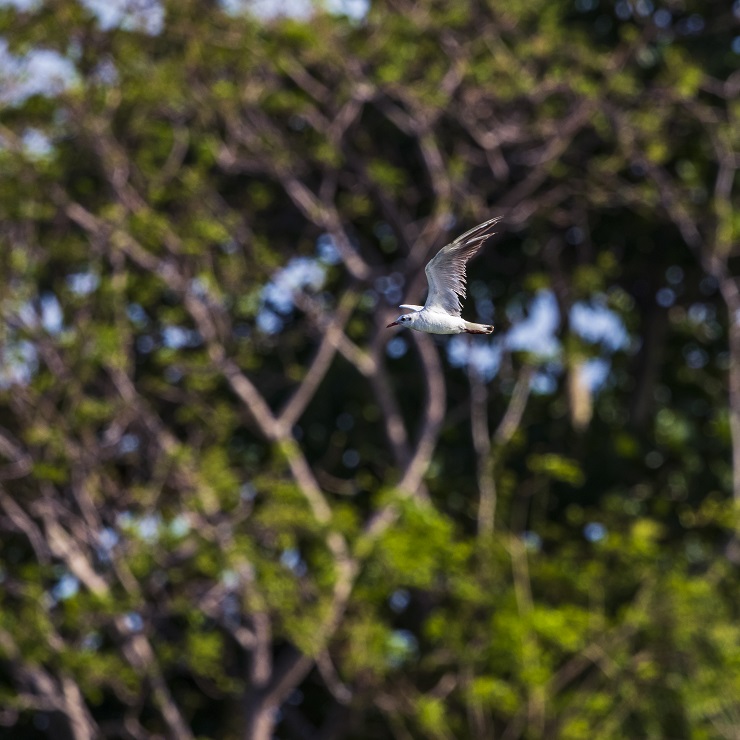
Almost too common in the Old World, to see a Black-headed Gull (sans black head, of course) all the way on Tobago isn’t something that happens every day.
The plan I had hatched some days before was to arrive at the northeast tip of Tobago by mid afternoon, board a boat and head out to some of the rocky islands where several species of seabirds were breeding. But by mid afternoon I was still wolfing down a box of mushroom alfredo and ogling at the Black-headed Gull. So we eventually made our arrival at the opposite end of the island in the early evening, just in time to catch the sun setting actually.
It was clear enough to get a view of the Saint Giles islands where hundreds of Red-footed Boobies and Magnificent Frigatebirds were roosting. I couldn’t give an exact figure, but made a conservative estimate on my eBird list.
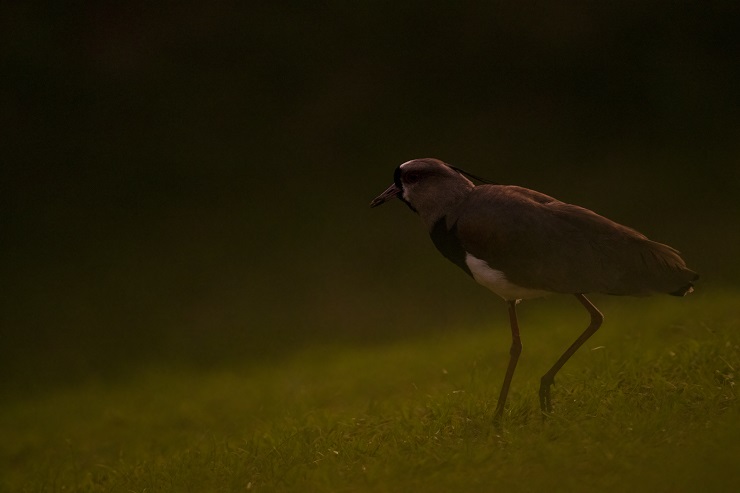
I photographed this Southern Lapwing basically in the dark.
We lingered for quite some time into the night, hoping for the appearance of some nocturnal bird. We were eventually rewarded not by a visual but by the mournful wail of a Common Potoo. It was only a night before full moon, and perhaps many of the night birds were cautious to emerge too soon.
By this time we were running on adrenaline – and it was prudent to begin the 75 minute drive back home. We called it a day at this point – I hadn’t taken an official tally but we felt completely satiated. I know that we missed out on several of the common species, and that there were some other spots we could’ve checked which may have added to our final total, but this is information to consider for the next big day in October. Hopefully by that time we would be supplemented by the arrival of boreal migrants!
The final tally for the day was 85 species. Not too bad, but there is still room for improvement!


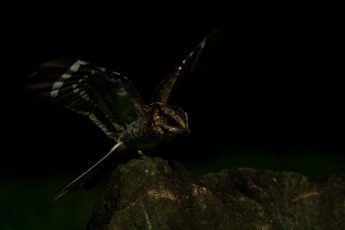
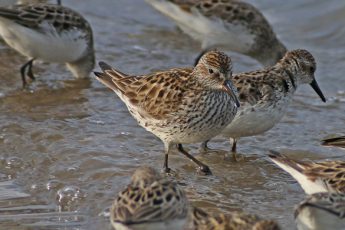
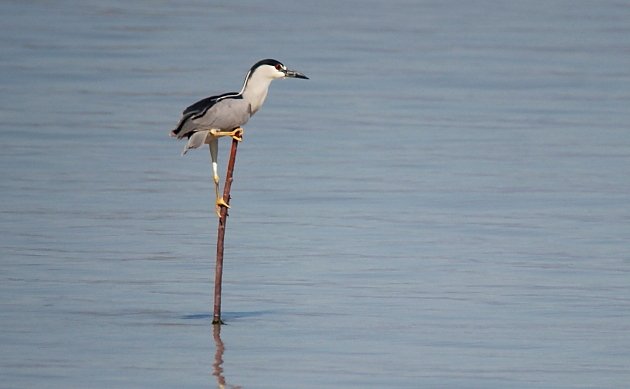

 New writers welcome – please contact us for details.
New writers welcome – please contact us for details.

















I really wish that I had made the effort to go to Tobago. It sounds like the kind of place that I would really enjoy. 🙂
Sorry that you missed out on it, Michael. Hopefully another time!